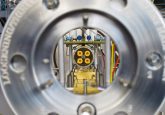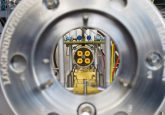9. Tandem MS vs HRMS – can you have one without the other?

Bertrand Rochat:
“Ideally, you would want to have both in your lab, but all labs have limitations regarding purchase expenses and number of MS specialists required. The main question involves precisely defining the analytical needs. One other question is to establish whether the additional burden of having two different MS technologies is useful. QQQ-MS are still deeply anchored in a bioanalyst’s mindset. Not in mine! If I had to buy one MS instrument to start a new lab, I would buy a HRMS; if it was two, I would buy two HRMS; if it was three, I would evaluate if I should buy a CE–MS, a GC–MS or a QQQ-MS.”
Diego Cortes: “The short answer is yes, we have been doing it for years. Most likely LC–HRMS will continue to provide significant advantages and be the go-to tool for metabolite profiling and discovery bioanalysis. In regulated bioanalysis, however, HRMS will at least for some time be reserved to those applications where there is a very significant need for MS specificity. In the area of therapeutic proteins and even small molecules we see HRMS as a complementary platform to the QQQ-based mass spectrometers, rather than completely replacing the latter. While significant progress has been made, in order for HRMS to be widely used in routine bioanalytical laboratories, challenges in sensitivity, instrument configuration, software development and regulatory acceptance still need to be addressed.”
Graeme Clark: “This is very environment specific. In a pure research environment such as academia or drug discovery, HRMS can supply all your needs, however as one moves into a more regulatory or clinical diagnostic setting where ultimate sensitivity is required, and/or the work fits more a production like environment, the increased robustness of tandem MS I feel is still necessary (for now).”
Ian Edwards: “For a DMPK bioanalytical lab, I think both triple quadrupole and high-resolution mass spectrometers have their place. As mentioned, the ruggedness of triple quadrupole mass spectrometers and their general performance is suited to routine analysis. The additional power of HRMS for large molecule bioanalysis can translate to increased sensitivity when selectivity is challenged, and data independent acquisition modes are useful for screening candidate surrogate peptides when quantifying proteins using the surrogate peptide approach. In addition, acquiring quantitative and qualitative data in a single experiment is a powerful way to identify and quantify drug-related material without prior knowledge. An additional capability of HRMS is the flexibility to provide quantitative data for large molecules at the intact, sub-unit, and surrogate peptide level.”
Scott Summerfield: “Tandem MS and HRMS both convey selectivity to the bioanalytical method. So, the question is really what level of selectivity is needed? I think the world of bioanalysis will have both tandem MS and HRMS capability but maybe the lab of the future will be comprised of a different balance than today.”
Timothy Garrett: “I think tandem MS is an essential pairing with HRMS.”
< 8 9





